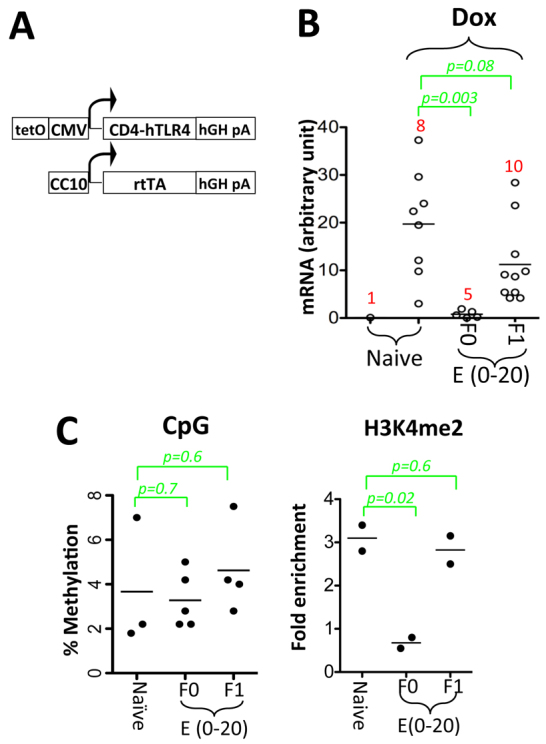Fig. 4.

Fetal Dox exposure silences a randomly integrated CMV promoter in the ensuing adults, but the effect is non-heritable. (A) The CMV-CD4hTLR4 transgene consists of a CMV promoter transgene (top) and a co-integrated transgene (bottom), the former differing from the CMV-GFP transgene (Fig. 6A) in that it expresses a fusion protein consisting of the extracellular domain of mouse CD4 and the intracellular domain of human TLR4 (instead of GFP), carries a poly(A) signal from the human growth hormone gene [instead of rabbit β-globin poly(A)] and is integrated as a concatemer. The co-integrated transgene carries the CC10 (Scgb1a1) promoter and express rtTA specifically in the lung. This CMV-CD4hTLR4 transgene is therefore distinct from the CMV-GFP transgene in terms of integration site and sequence, except that it also carries the tetO-CMV minimal promoter. (B) Tail blood cells (CMV-CD4hTLR4+/–;Rosa26-rtTA+/–) were cultured in the presence or absence of Dox for 24 hours before CD4hTLR4 mRNA was quantified using β-actin as a loading control. Three prenatally exposed females were mated with CD1 males to produce the F1 offspring. (C) CpG methylation (left) and H3K4me2 (right) at the CMV promoter in lymphocytes. Experiments were performed as in Fig. 2 (note the differences in the y-axis scales and in the basal H3K4me2 levels with Fig. 2).
